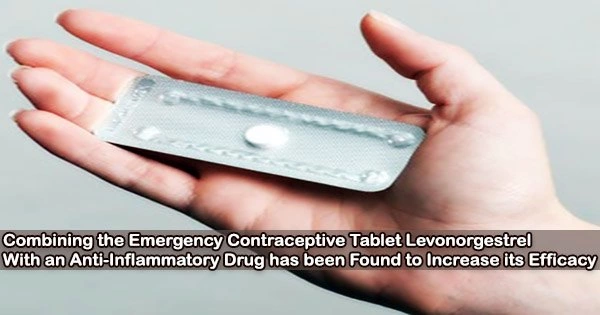A randomized controlled trial reported in The Lancet found that taking the levonorgestrel emergency contraceptive pill after unprotected sex along with the anti-inflammatory drug piroxicam significantly reduces the number of pregnancies compared to taking levonorgestrel by itself.
In most nations, the most popular form of emergency contraception is a pill that contains either levonorgestrel or ulipristal acetate, with levonorgestrel being accessible in more nations than ulipristal acetate. Both forms of contraception prevent or postpone ovulation, and neither is effective after ovulation.
The accepted effectiveness of levonorgestrel is based on the results of a trial from 1998 in which levonorgestrel prevented 95% of expected pregnancies when taken within 24 hours of unprotected sex, 85% if taken within 25–48 hours, and 58% if taken within 49–72 hours. However, more recent research suggests the efficacy of levonorgestrel might be lower.
“The levonorgestrel emergency contraceptive pill is one of the most popular choices of emergency contraception in many parts of the world, so finding out that there is a widely available medication which increases levonorgestrel’s efficacy when they are taken together is really exciting,” said Dr. Sue Lo from the Family Planning Association of Hong Kong, a co-investigator of the study.
First author of the study Dr. Raymond Li from The University of Hong Kong added, “Our study is the first to suggest that a readily available and safe medication taken at the same time as the levonorgestrel pill can prevent more pregnancies than levonorgestrel alone. We hope these results will lead to further research and ultimately changes in clinical guidelines to enable women around the world to access more effective emergency contraception.”
Overall, this study suggests that anyone administering levonorgestrel 1.5 mg as emergency contraceptive pills should consider the addition of 40 mg piroxicam orally, as it improves efficacy with minor side-effects.
Dr. Erica Cahill
The study took place at a major community sexual and reproductive health service in Hong Kong between August 2018 and August 2022. Within 72 hours of unprotected intercourse, women who needed levonorgestrel emergency contraception were randomly assigned to receive either a placebo pill or a single supervised dose of levonorgestrel 1.5 mg combined with piroxicam 40 mg.
Both the participants and the present medical staff were unaware of which group received what kind of care. A follow up appointment was scheduled one to two weeks after the next expected period.
If a regular period hadn’t started by the time of the appointment, a pregnancy test was done. Based on a tested model that was published in 1998, the percentage of pregnancies avoided out of those anticipated was estimated.
Of the 836 women followed up, there was one pregnancy among the 418 women who took piroxicam and levonorgestrel and seven pregnancies among the 418 women who had the placebo and levonorgestrel. The percentage of expected pregnancies without contraception was estimated at 4.5% (19/418) in both groups.
Therefore, the percentage of pregnancies prevented following piroxicam levonorgestrel co-treatment was 95% (18/19), compared with 63% (12/19) in those who took levonorgestrel and placebo.
Between those getting piroxicam and those receiving a placebo co-treatment, there were no appreciable differences in the frequencies of adverse events.
Professor Kristina Gemzell-Danielsson from the Karolinska Institute, another co-investigator, explained that “levonorgestrel prevents pregnancy by blocking or postponing the luteinizing hormone surge, which disrupts the ovulatory process. Piroxicam might work by targeting a different type of hormone prostaglandins. Prostaglandins facilitate several reproductive processes including ovulation, fertilization, and embryo implantation.”
“Therefore, we speculate that piroxicam may provide a contraceptive effect both pre-ovulation (by blocking the ovulatory process) and post-ovulation (by preventing the implantation of the embryo), however our trial did not investigate piroxicam’s mechanism of action and further studies are required to confirm this.”
The study’s generalizability to different settings is one of the study’s weaknesses, which the authors admit. It is uncertain whether the piroxicam-levonorgestrel co-treatment will be equally effective when applied to women in those circumstances since the study excluded women who used hormonal contraception recently or currently, as well as those who had more than one episode of unprotected sex prior to taking emergency contraception.
Writing in a linked Comment, Dr. Erica Cahill from Stanford University School of Medicine, who was not involved in the study, said, “Overall, this study suggests that anyone administering levonorgestrel 1.5 mg as emergency contraceptive pills should consider the addition of 40 mg piroxicam orally, as it improves efficacy with minor side-effects.”
“These conclusions might not apply to all patients, as this study was limited by a specific population, with participants being mostly of Asian ethnicity and weighing less than 70 kg. Given that levonorgestrel emergency contraception is less effective in people with obesity, the efficacy shown here might not be generalizable to patients with higher BMIs.”
















